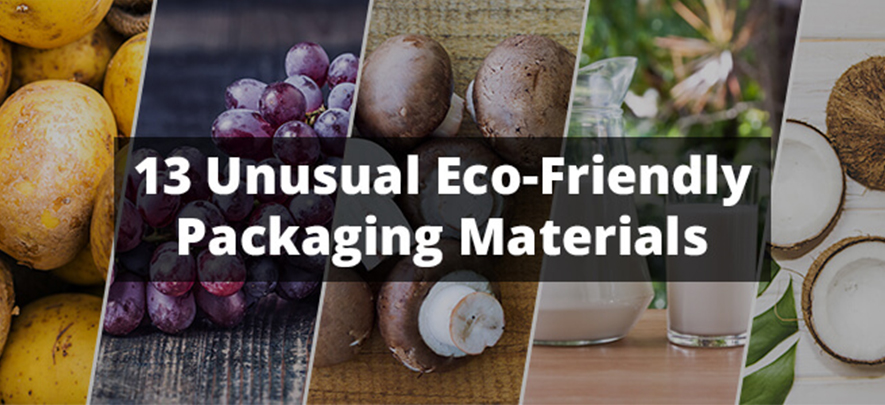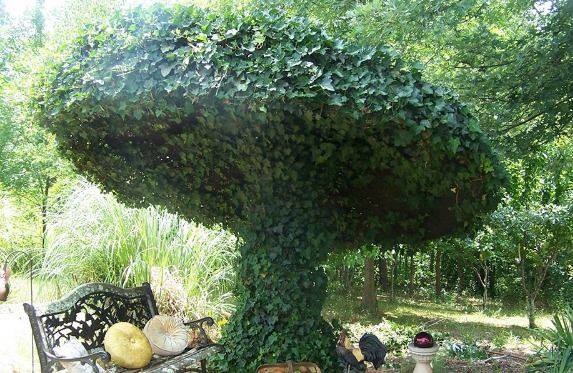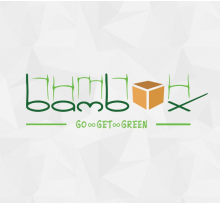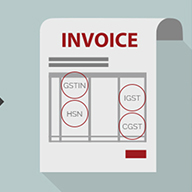13 unusual materials used in eco-friendly packaging

Logistics & Supply Chain
392 week ago — 10 min read
Climate change is for real.
Let that sink in. Meanwhile, we will do our part in making the planet a safer, greener place for the generations to come. Adopting eco-friendly materials would reduce the risk on environment leading to a positive chain of events.
Today, we are going to talk about eco-friendly alternatives to plastics. No, not the usual run-of-the-mill list of materials like jute, sugarcane, etc. These are some mind-boggling list of materials; some that you would never have thought could be repurposed for packaging.
Teaser: Milk.
But before that,
What are the benefits of using eco-friendly packaging materials?
Eco-friendly packaging, as the name suggests, is environment-friendly and leaves a minimal carbon footprint. But, there are a lot more benefits to it.
- Eco-friendly packaging is recyclable and compostable
- Unlike popular notion, these products are cheaper in the long run
- Several countries provide tax incentives to companies that use eco-friendly materials
- When a business goes eco-friendly, it improves the brand image tremendously
Now let’s get to the list.
Unusual Eco-Friendly Packaging Materials
1. Mushrooms
Swedish retail giant – Ikea, in their search for a biodegradable alternative to polystyrene stumbled upon the concept of fungus-based packaging. Upon delving deeper, they discovered mushrooms. Categorized as fungi, mushrooms are one of the most widely consumed commodities in the world. Their usage is spread over a wide spectrum, ranging from cooking to medicines. Not many of us may know that every inch of a mushroom can be utilized for packaging, from its umbrella (outer shell) to stem and roots. Surprised?
Outer shell – Underneath the outer shell of a mushroom, lies a sheath of mycelia. This is mixed with other natural ingredients like oats to make a mixture which binds together to form a solid material. These are then molded into required shapes.
Stem – Mushroom stems are used as an alternative to Styrofoam-based packing peanuts — the kind you get when you order some fragile material for cushioning. What more? Some of these are made edible! Quick snack, eh?
Roots – Similar to the outer shell, mushroom roots also contain mycelia which can be used for packaging.
2. Potatoes
Veuve Clicquot is a France based luxury champagne company. In the year 2014, they began a drive to create more eco-friendly packaging for their world-famous champagne. The result was “Naturally Clicquot” – a champagne range donned in eco-friendly packaging. There were 3 subsequent versions released. Version 1 and 2 saw the use of potato starch as an ingredient in this amalgam. Mixed with natural fibers, paper, and water, this packaging is also isothermal i.e. keeps cold things cold and vice-versa.
3. Grapes
After a taste of success with the “Naturally Clicquot” campaign, Veuve Clicquot released version three of its eco-friendly champagne packaging. This time around, their process became much leaner and cleaner, ditching potato starch for a by-product from their own winemaking process – grape skins. Like version 1 & 2, this carton is made from a combination of water, natural fibers, and grape skins.
4. Eucalyptus
Known for its medicinal properties, eucalyptus is widely exploited by the pharmaceutical industry. Every inch of the tree has been used commercially. Now with the alarming need for alternatives to plastic packaging, businesses have found shelter under eucalyptus trees, figuratively speaking.
One such business is Parkside Industries Corp – a leader in compression & injection molding technology. Parkside developed sustainable packaging for its client, Rhythm 108. The product, called ‘NatureFlex’, is a bio-film made from the wood pulp extracts of eucalyptus trees.
The proposed design could apparently improve the shelf life of products by keeping moisture and oxygen out.
5. Sugar + CO2
The University of Bath made some breakthrough in sustainable packaging with its invention of a new type of biodegradable packaging material made from two common ingredients – Sugar & CO2.
Although not widely used in day to day packaging, the resultant material (with its bio-compatible properties) can be used in the medical industry for body implant cases or as scaffolds for growing tissues or organs for transplant.
6. Shrimp Shells
Shrimp Shells, you read it right. An engineering professor at the University of Nottingham in U.K. has discovered a process to convert shrimp shells into biodegradable bags. Initially, the project focuses on Egypt, where there is an abundance of crustacean shell waste. These are collected in bulk, boiled in acid to make them less brittle and then stripped down to a bag like material. According to the study, just two pounds of these shells can yield 15 biodegradable bags.
7. Limestones
What do you do when you want a step ahead in biodegradable packaging without harming trees? You choose stones! Pulverized limestones are being used along with a small amount of polyethylene (as binding material) to create sustainable packaging materials.
Since these are sourced from stones, every ton of material produced helps save 20 trees. Considering the amount of packaging material produced across the world, this creates a huge positive impact on the environment. The resultant packaging material produced can be treated just like any normal paper, i.e., can be printed with branding designs, etc.
8. Chicken Feathers
Chicken feathers that are left behind in the Poultry and meat processing industry do not find any use in the scheme of things, generated in abundance throughout countries. A new process can now convert these feathers to manufacture carry bags and containers. Chicken feathers are rich in keratin — a highly fibrous, tough protein that offers great strength and tear resistance — making them ideal for most industry standard packaging.
The process known as polymerization begins with chicken feathers being ground into fine dust. Then chemicals are then added to make the keratin molecules stick together to form long chains. The process yields bags that are free of any contaminants and stands up to water better than alternatives like cornstarch.
9. Sheep Wool
Who knew these adorable animals could one day, serve the packaging industry? Sheep wool is a great insulator, making it an ideal choice for packing products that are temperature sensitive. On a commercial scale, companies such as WoolCool have started to produce sheep wool-based insulated packaging.
Sheep wool has several advantages.
- They have better isothermal properties compared to styrofoam
- Wool fibers are safe and non-hazardous. Hence, can be used in packaging baby products.
Note: There is no doubt that sheep wool is an excellent packaging material. But when mass produced, immense care must be put into how the wool is sourced. Animal harm is an intolerable offense.
10. Milk
Many of us hated the idea of being force-fed a glass of milk before going to bed. It’s a common knowledge that milk is an excellent source of natural protein. But, did you know that casein, a milk protein is now being used to produce a biodegradable alternative to plastic films?
Casein-based products are 500 times better at keeping enclosed items from rancidification due to oxidation, as compared to plastics. Since it is a milk derivative, it is also sustainable and edible making it perfect for food packaging.
11. Liquid Wood
Wood can be broken down into 3 main components – Lignin, Cellulose, and Hemicellulose. Out of these, Lignin is not needed in the paper manufacture industry. However, lignin can be mixed with finely ground wood and other natural fibers to produce plastic granulates. These granulates can be melted and injection molded into required shapes for the packaging industry.
12. Palm
Palm leaves have now become a common material used to produce disposable bowls, plates, and cutlery. They are mostly sourced from areca palm leaves which are collected, cleaned, processed, and moulded. These leaves have properties appropriate for use in the food sector. They are microwave safe, waterproof, temperature resistant, and sturdy.
13. Coconut
When Coconuts are processed on a commercial scale, the shells and husks are discarded. A company named Whole Tree decided to research the uses of Coconut husks and eventually came up with a plan to reuse coconut husks as packaging alternative to plastics.Coconut husks are rich in lignin, the material we were just talking about, comes with natural burn resistance – a commendable quality for packaging materials. Coconut shells are also a biodegradable alternative to hard plastics, these shells are several times stronger than plastics. They can be processed to create disposable/reusable bowls.
Wrapping up!
With emerging technology helping us fashion sustainable packaging, we are sure that there are going to be many other eco-friendly options available in the future. Businesses are adapting to eco-friendly alternatives at a rapid pace. Throughout this article, we shared several eco-friendly packaging materials with you, some wackier than other.
Which of these can be adapted to your business? Are you using eco-friendly packaging already?
To explore business opportunities, link with me by clicking on the 'Invite' button on my eBiz Card.
Disclaimer: The views and opinions expressed in this article are those of the author and do not necessarily reflect the views, official policy or position of GlobalLinker.
Network with SMEs mentioned in this article
View Shalmali 's profile
Other articles written by Shalmali Patkar
GST Fundamental: Maintaining accurate records
402 week ago
Most read this week















Comments (5)
Share this content
Please login or Register to join the discussion